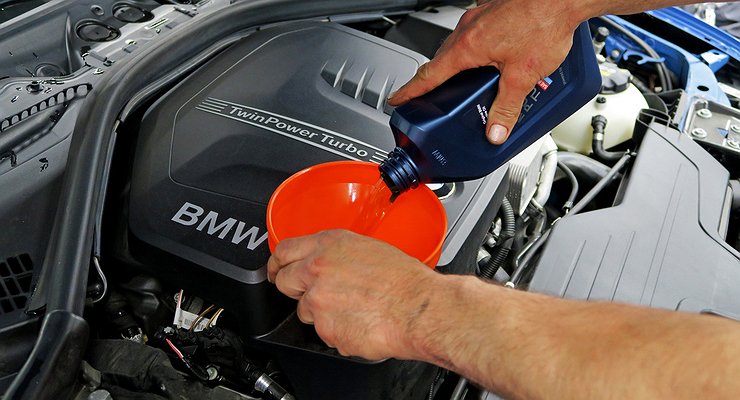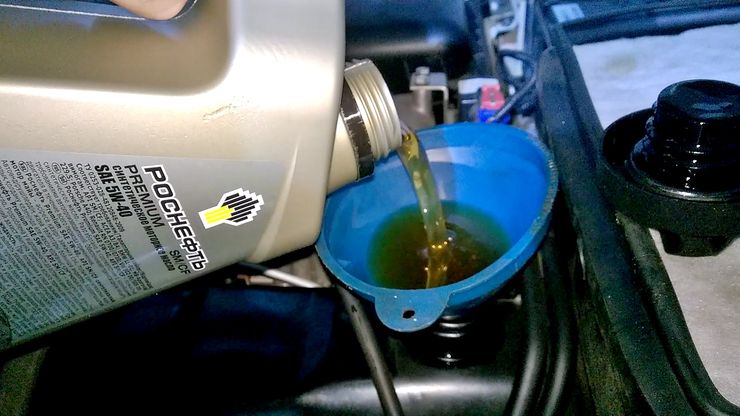How to read the labels on motor oil cans?
- October 10, 2022
- 0
Now that major motor oil manufacturers have left the Russian market, car owners are faced with a number of problems. Citizens should choose products that they have never
Now that major motor oil manufacturers have left the Russian market, car owners are faced with a number of problems. Citizens should choose products that they have never

First you need to know what kind of oil your car needs. To do this, you need to look at the viscosity grade and various specifications that meet international quality standards.
The only recognized system for classifying oils based on viscosity is SAE. This abbreviation reads as Society of Automotive Engineers (Society of Automotive Engineers). According to SAE, all engine lubricants are divided into summer, winter and all-season. This can be recognized by letters and numbers. Purely wintry specimens are marked with one number and the letter W (Winter, that is, winter). For example 0W or 5W.
However, the most common lubricants are all season. They are identified by a double number: 5W30, 10W40. The first number indicates the maximum viscosity at temperatures below freezing. Let’s say 5W corresponds to thirty degrees of frost. The second is softness or hardness at a temperature of 100 degrees. The larger it is, the higher the heat resistance.
This is the most important and easiest guide. If your car’s engine is modern, supercharged, you may prefer 10W40. So the engine will be easier in traffic jams. “Elderly” is well suited 5W30 for any time of year.
On the label you will also see various elements that ensure that the product is original. These are QR codes or 12 digit digital markers. In the current situation, such “cryptography” becomes especially relevant, as the number of counterfeits has increased.
Present on the bus and API, ACEA or AAE quality standards. Car manufacturers always indicate them in the owner’s manual. They should also be guided, as these recommendations depend on the technical characteristics and type of engine of a particular machine.
There is also lettering. For example, SJ lubricants should be used in car engines no older than 2001, SM no older than 2010, and SN are intended for cars from 2011. And if SN oil is suitable for your engine, you can not save and “go down ” to S.J.
Often you can find the manufacturer’s approvals. For example, Volkswagen or Mercedes-Benz. For Mercedes passenger cars, they look something like this: MB Approval 229.3 / 229.1. This means that the car company itself allowed the use of consumables for its engines. Unfortunately, there are now fewer such oils on the market.
Finally, one last selection tip. If, after studying the label, you still do not understand which product is suitable for your car engine, give preference to products from major domestic manufacturers. Buy lubricant at network gas stations. There are certainly no fakes. We can already say with confidence that the company has overcome the shortage of additives. Otherwise, a massive “death” of engines would begin in Russia. But be careful with imported oil. Now it is easy to buy a “bodyagi”, because many “officials”, we repeat, have suspended deliveries.

First you need to know what kind of oil your car needs. To do this, you need to look at the viscosity grade and various specifications that meet international quality standards.
The only recognized system for classifying oils based on viscosity is SAE. This abbreviation reads as Society of Automotive Engineers (Society of Automotive Engineers). According to SAE, all engine lubricants are divided into summer, winter and all-season. This can be recognized by letters and numbers. Purely wintry specimens are marked with one number and the letter W (Winter, that is, winter). For example 0W or 5W.
However, the most common lubricants are all season. They are identified by a double number: 5W30, 10W40. The first number indicates the maximum viscosity at temperatures below freezing. Let’s say 5W corresponds to thirty degrees of frost. The second is softness or hardness at a temperature of 100 degrees. The larger it is, the higher the heat resistance.
This is the most important and easiest guide. If your car’s engine is modern, supercharged, you may prefer 10W40. So the engine will be easier in traffic jams. “Elderly” is well suited 5W30 for any time of year.
On the label you will also see various elements that ensure that the product is original. These are QR codes or 12 digit digital markers. In the current situation, such “cryptography” becomes especially relevant, as the number of counterfeits has increased.
Present on the bus and API, ACEA or AAE quality standards. Car manufacturers always indicate them in the owner’s manual. They should also be guided, as these recommendations depend on the technical characteristics and type of engine of a particular machine.
There is also lettering. For example, SJ lubricants should be used in car engines no older than 2001, SM no older than 2010, and SN are intended for cars from 2011. And if SN oil is suitable for your engine, you can not save and “go down ” to S.J.
Often you can find the manufacturer’s approvals. For example, Volkswagen or Mercedes-Benz. For Mercedes passenger cars, they look something like this: MB Approval 229.3 / 229.1. This means that the car company itself allowed the use of consumables for its engines. Unfortunately, there are now fewer such oils on the market.
Finally, one last selection tip. If, after studying the label, you still do not understand which product is suitable for your car engine, give preference to products from major domestic manufacturers. Buy lubricant at network gas stations. There are certainly no fakes. We can already say with confidence that the company has overcome the shortage of additives. Otherwise, a massive “death” of engines would begin in Russia. But be careful with imported oil. Now it is easy to buy a “bodyagi”, because many “officials”, we repeat, have suspended deliveries.
Source: Avto Vzglyad
I’m Sandra Torres, a passionate journalist and content creator. My specialty lies in covering the latest gadgets, trends and tech news for Div Bracket. With over 5 years of experience as a professional writer, I have built up an impressive portfolio of published works that showcase my expertise in this field.